Day 1 :
Keynote Forum
Olga S Naymushina
The V.S. Sobolev Institute of Geology and Mineralogy of the Russian Academy of Sciences (IGM SB RAS), Russia
Keynote: Geochemical modeling in solving some environmental problems: pollution of mining regions, radioactive wastes storage
Time : 08:30-09:00

Biography:
Olga S Naymushina completed her PhD from Tomsk Polytechnic University, Russia in geochemistry of organic reach groundwater (2014). She is currently a Senior Staff Scientist at the V V Sobolev Institute of Geology and Mineralogy SB RAS (Novosibirsk, Russia). She has published more than 20 papers in reputed journals. She is the Head of the project of Russian Science Foundation named "Immobilization of heavy metals by natural and modified biosorbents".
Abstract:
This paper has two parts. The first briefly describes geochemical and geophysical investigations at the territory of gold tailings impoundment produced with cyanidation by the abandoned Komsomolsk Gold Extraction Plant, KGEP (Kemerovo region, Russia). The second part reflects on our recent studies in the area of the low-level waste repository of the Novosibirsk Plant of Chemical Concentrates, NPCC (Novosibirsk, Russia). The relatively low sulfide content in the Komsomolsk tailings result in a low acid producing potential (AP). The situation is complicated by the displaced Berikul tailings of the former Berikul GEP. In these tailings, the sulfide content is 25%, they have high AP and the formation of acidic surface ponds (pH ∼2) with high concentrations of metals and metalloids (as up to 4.1 g/L). Based on electrical resistivity tomography, the uncontrolled leakage of acidic and highly mineralized solutions through a natural geological fault into groundwater horizons was revealed. Uranium contamination of groundwater is prevalent worldwide because of uranium extraction for nuclear energy and weapons. An experimental modeling has been carried out to convert U(VI) to species with low solubility via metabolic process. The removal of nitrates, sulfates and U(VI) reduction due to the stimulated microbiological activity was proved. Within 13 days after the start of serum injections, reducing conditions was indicated and the sharp decrease in nitrate concentrations was observed. Sulfate reduction was established approximately 50 days later as indicated by the increase in sulfide concentrations. Model calculations by computer code “HCh” have approved precipitation of β-UO2.25(s) at Eh+115 mV and precipitation of UO2(s) after the fall of Eh to -397 mV. The developed model can be used as a starting point of assessment of the redox sensitive elements behavior in the process of bioremediation.
Keynote Forum
Adel A Ismail
Kuwait Institute for Scientific Research, Kuwait
Keynote: A comparative study on mesoporous TiO2 film deposited onto diverse glass substrates for photooxidation of acetaldehyde in gas phase
Time : 09:30-10:00

Biography:
Adel A. Ismail is a Research Scientist in Nanotechnology and Advanced Materials Program, EBRC at Kuwait Institute for Scientific Research, KISR. He joined KISR two years ago. He received his Ph.D. degree in Chemistry from Ain Shams University in 2001, Cairo, Egypt. Ismail carried out postdoctoral research at University of Florida at Material Science Department, USA (2003), National Institute of Advanced Industrial Science & Technology, Sendai, Japan (2005-2007), and Photocatalysis and Nanotechnology Research Unit at University Hannover (2008-2010). His research interests include design development porous photocatalysts and photocatalytic applications in destruction of organic compounds, hydrogen production, chemical engineering of photocatalytic processes, and self-cleaning. He has published more than 130 international scientific papers and his publications have been cited more than 4600 times with h-Index: 40. He is acted (or still acts) as project coordinator or project leader in many academic and industrial programs.
Abstract:
Mesoporous TiO2 films were dip-coated diverse conductive glass substrates such as Indium Tin Oxide (ITO) and F-doped Tin Oxide (FTO) as well soda-lime glass (SL). The mesoporous TiO2 films were assessed for their photodegradation for CH3CHO oxidation in gas phase as a probe molecule and compared with both nonporous TiO2 film deposited on FTO and commercial Pilkington Glass. The thickness and surface areas of the mesoporous TiO2 films was determined to be around 228±10, 184 ±15 and 205 ±15 nm and 215, 352 and 295 m2/cm3 deposition on SL, FTO and ITO, respectively. The prepared mesoporous TiO2 film deposited on SL, FTO and ITO are more photonic efficiency than nonporous TiO2 film and Pilkington Glass. The photonic efficiency of mesoporous TiO2 film is the following order FTO> ITO > SL. The photonic efficiency of TiO2/FTO is greater 21 and 3 times than that commercial Pilkington Glass ActivTM and nonporous TiO2/FTO, respectively. In addition, the outstanding photocatalytic activity of mesoporous TiO2/FTO substrate is shown in recycling tests in which no significant reduce in the photonic efficiency was recognized after five repetitive times for 10 hours continuously, indicating a promising materials for potential applications.
Keynote Forum
Bassem Nassouhy Abdelrahman Attwan
Scientific Business Solutions Group of Companies, Egypt
Keynote: Key success factors for applying environmental management system and its role in pollution control
Time : 10:00-10:30
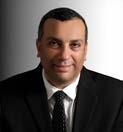
Biography:
Bassem Nassouhy is a multi-skilled Consultant, International Speaker & Trainer in various field of business, with a proven track record in particular area of business expertise such as Environment, Health & Safety as well as waste management as an expert in those fields with PhD, MBA & various post-graduate diplomas as well as various international well recognized certifications with vast expertise based on +20 years of diversified experience with multinational groups JICA, Samil, EDF, Orascom, Lafarge, LafargeHolcim, EcoCem Industrial Ecology & Geocycle in different countries in addition to delivering during previous 15 years a part-time third party & voluntary consultancy, training based on international standards and presenting research papers in various international conferences. He has the experience with a proven track record of creating great lobbying in the community, particularly with governmental authorities in addition to various awards and recognitions particularly within GCC governmental authorities.
Abstract:
Air pollution can directly or indirectly affect human health, causing physical discomfort and leading to disease or even death. Studies have shown that when the human body is exposed to highly polluted air for a long time, the mortality rate increases. Furthermore, air pollution has become the fourth primary risk factor for all deaths after heart attack, dietary risk and smoking, according to the latest statistics. In recent years, there have been frequent haze weather events in many places where the air quality was mostly between ‘moderate’ and ‘unhealthy for sensitive groups. Studies show that under such air conditions, the mortality rate from cardiovascular and cerebrovascular diseases and the prevalence of asthma and respiratory diseases both increase. This paper‘s foremost objective focus on air pollutants classifications: Primary and Secondary defining its various sources like: Acid rains, Green House effect, Smog and its types, …etc. The global greenhouse effect – also called global warming – concerns us now because atmospheric CO2 concentrations are increasing faster than ever, and because most of the increase is due to industrial growth. Many scientists predict that unless we do something to impede global warming, it may: – Increase the number and intensity of dangerous heat waves – Increase severe storm activity – Damage certain crops – Raise the average sea level. These in turn will increase weather- related deaths, damage coastal cities and towns, and ruin coastal ecosystems. It is still hard to find a consensus on global warming. Different experts use different models and even different data sets. Some believe global warming is imminent and predict that it will cause catastrophic damage. Others are far less concerned. Until the science is more definitive, the global-warming debate will continue to be governed by Robinson’s Rule of Expert Testimony: “For any given PhD, there is an equal and opposite PhD. While, the at-most objective of the paper will focus on applying Environmental Management system to control air pollution.
- Pollution | Pollution Control Technologies and Devices | Pollution & its Effects on Environment | Energy and Environment | Water Pollution and Treatment
Chair
Olga S Naymushina
The V.S. Sobolev Institute of Geology and Mineralogy of the Russian Academy of Sciences (IGM SB RAS), Russia
Co-Chair
Adel A Ismail
Kuwait Institute for Scientific Research, Kuwait
Session Introduction
Yumiko Nitta
Hiroshima Shudo University, Japan
Title: The measurement of wildlife exposure to cadmium contributes to assess its contamination in the Hiroshima wide area urban districts and the human health
Biography:
Abstract:
Cadmium (Cd) is one of the contaminants inevitable to be consumed through foods. During a screening of the Cd concentrations in the game meat commercially available in the Hiroshima wide area urban districts, some of the meat contained more than 0.05 mg/kg of cadmium. We set up the two areas having the agricultural landscapes within the districts, captured wildlife and measured the Cd concentrations in muscle and kidney. The distribution of Cd in the body confirmed the higher concentrations in kidney than in muscle. The concentrations in muscle of all the captured wild boars (Sus scrofa leucomystax), one of the large wildlife speices were less than 0.05 mg/kg, while the average concentrations in kidney were 1.97±1.67 mg/kg. The concentrations in muscles of the 3 species of the medium-sized wildlife, weasel (Mustela itatsi), raccoon dog (Nyctereutes procyonoides) and red fox (Vulpes vulpes) were less than 0.05 mg/kg, while those in kidney were 4.63±6.66 mg/kg with the range of 0.29-20.60 mg/kg. To find out the source of Cd accumulated into the mammals, the levels in the soil of their habitat were measured. As the Cd values in soil was low at the examined areas, other sources of the Cd accumulated in the wildlife could be suspected. To screen the game meat or the wildlife muscle in the agricultural landscapes by the criterion dose of 0.05 mg/kg was informative for the risk assessment of the humans exposed to Cd.

Biography:
Mourad Terniche pursued his PhD from Algiers University and Postdoctoral studies from Algiers University School of Medicine (Algeria). His educational qualification includes Doctor of General Medicine 1996, Diploma of Special Medical Studies (DEMS) in Pneumo-Phthisiology 2001. He is an Assistant Professor in Pneumo-Phthisiology. He has been a speaker at several national and international conferences.
Abstract:
The developing countries are facing deterioration of the air quality; many factors are incremented, the most important are the traffic sector and the rapid industrialization. The situation which prevails in emerging countries is not known enough. In Algeria, every year 10 to 12 million inhabitants consult for acute episodes of respiratory diseases. Number of these episodes is directly linked to exposure to air pollution. A period of April 2013 to March 2015, 20606 patients were received in our consultations. The respiratory symptoms represent 11.23% of the reason for consultation; more part of patients was female with a mean age of 42. The mean reason for consultation was asthma at 28.51%. The upper respiratory tract infection represented 28.38%. COPD (chronic obstructive pulmonary disease) represented 73.4% of inpatients, essentially people with comorbidity. The daily average level of the PM10 (particulate matter) was 53 μg/m3. There is a correlation between the daily levels of particles PM10 and the mortality, the hospitalizations and the exacerbation of respiratory symptoms. The impact of the exposure to the PM10 represents 3.4% of all sanitary events. So, a decrease in the PM10 level implies an improvement in public health. Monitoring and management of air pollution is a priority for environmental protection and public health.
Vincent Tan
Monash University, Australia
Title: Kinetic modelling of scrap tyre pyrolysis through the modified chemical percolation devolatilization (M-CPD)

Biography:
Vincent Tan obtained first-class Honours Bachelor’s degree in Chemical Engineering from Curtin University (Australia). He is currently pursuing PhD in Chemical Engineering from Monash University (Australia). He has published one journal paper entitled: Scrap tyre pyrolysis: modified chemical percolation devolatilization (M-CPD) to describe the influence of pyrolysis conditions on product yields in Waste Management (2018).
Abstract:
The disposal of waste tyres has been an inevitable problem around the world. Approximately 800 million used tyres are dumped annually, with a projected growth rate of 2%. Pyrolysis is as an attractive thermochemical technique for recycling the abundance of waste tyres while at the same time allowing energy fuel production. However, significant problems such as uncertain product yields and product properties could appear, which refrain the pyrolysis oil from being used successfully on a commercial scale. Although plenty of studies have been performed for the pyrolysis of waste tyres in the lab scale, there is very limited knowledge on the industrial heating provisions that use direct and indirect heating to perform the process through the combustion of methane-rich pyrolysis gas for energy-saving purposes. Hence, this study aims to develop a robust kinetic model to predict the pyrolysis of waste tyres, and make the results of experimental studies more applicable as far as practical industrial provisions are concerned. As a result, a chemical-based model (M-CPD) that incorporates a 1-D heat transfer mechanism has been developed to predict the product yields of tyre pyrolysis upon different temperature, heating rate, particle size and even reactor dimensions. The experimental results are obtained from tyre pyrolysis in lab conditions, where industry standards and practices are taken into consideration and simulated, have shown that the tyre oil produced from the direct heating provisions have the strongest potential to be used as petroleum derived fuel substitutes.
Tao Zeng
Nagoya University, Japan
Title: Performance evaluation of mechanical booster pump-assisted adsorption chiller cycle

Biography:
Tao Zeng obtained his Master’s Degree in Chemical Engineering, Nagoya University (Japan). He is currently pursuing PhD in Chemical Engineering at the same school. His research interests are mainly focused on the development of adsorption refrigeration systems. He has been a member of the Japan Society of Energy and Resources for the past two years.
Abstract:
Large amounts of waste heat below 100°C from the industrial sector are released into the atmosphere. The development of new technologies aiming to reduce problems related to energy consumption has become urgent. Adsorption chiller, as one of the heat energy conversion apparatus, can use low-temperature heat source of 60°C-100°C to generate the desired cooling effect for reducing air-conditioning loads. However, the adsorption chiller cycle still has a few problems in practical use; by reason of the cooling power per unit volume of the adsorber and the COP are smaller than that of absorption chiller or vapor compression chiller. To solve the problems associated with the adsorption chiller cycle, we proposed a hybrid adsorption chiller which contained a mechanical booster pump (MBP) in the adsorption process or desorption process. The objective of this study is to investigate the possibility to apply an MBP–assisted adsorption chiller cycle to improve and generate cooling power at a wider operational temperature range, such as operation at a waste heat temperature below 60°C or a lower evaporating temperature. The MBP was set either between the evaporator and the adsorber to increase the vapor pressure in the adsorber or between the adsorber and the condenser to decrease the vapor pressure in the adsorber. The results indicate that the increase of adsorber vapor pressure in the adsorption process contributed to a higher equilibrium adsorbed amount, and the decrease of adsorber vapor pressure in the desorption process resulted in a lower equilibrium adsorbed amount. The cooling heat output and the amount of cooling heat were improved and increased with the input electrical power of MBP.
- Air Pollution and Treatment | Pollution and Health Effects | Human Impact on the Environment Waste Management and Treatment | Water and Climate Change
Chair
Adel A Ismail
Kuwait Institute for Scientific Research, Kuwait
Co-Chair
Rosalam Hj. Sarbatly
Universiti Malaysia Sabah, Malaysia
Session Introduction
Samroot Samreen Wani
TERI SAS, India
Title: Hyperloop: The sustainable transportation

Biography:
Samroot Samreen Wani completed her graduation in Civil Engineering (2013-2017) and is currently pursuing Masters of Technology in Renewable Energy Engineering and Management for the academic year 2017-2019 from TERI School of Advanced Studies, New Delhi, India. She has been awarded RULA International Award (2018) for Best Researcher for Three Dimensional Transportation. She has to her credit three research papers published. She worked as an Intern with the Department of Science and Technology of the Government of India.
Abstract:
Due to rapid urbanization and emergence of mega-cities, urban transportation infrastructures are stressed leading to traffic congestion, high fuel consumption as well as increasing number of accidents and fatalities. Present transport sector globally is largely two-dimensional and may not be able to cope up with the growth of cities which is three-dimensional in nature, the environmental pollution, the traffic congestion, the sustainability, etc. This has led to efforts towards three dimensional transportation systems such as passenger drones, flying cars, cars moving through multi-layer underground tunnels etc. The overall concept of three-dimensional transportation demonstrates that the transportation sector has made a significant progress towards comprehending the necessity of a proper and sustainable transit system, which otherwise has implications on environment, health, infrastructure and sustainability as well. However, some of these futuristic options may be associated with safety and security concerns – both for them, as well as caused by them. Some of these options envisage utilization of artificial intelligence and even augmented reality. Technological challenges, the potential for cost-effectiveness, and their socio-economic impacts are also important considerations. Through deep and critical study, in this journal, the author will try to analyze the concept of hyperloop and its practicality; about its various components, its working, global acceptance of hyperloop and its possible advantages and unaddressed issues. Some critics are of the opinion that hyperloop is more of a hypothetical idea which is totally impractical and impossible, but optimistic experts say that it just needs some hard work, a decade’s time and huge amount of money which would then result in revolution of the whole transportation system in a unique, unpredictable and sustainable way. A cross-impact analysis to evaluate possible future scenario for this will also be taken up.
Xian Ruan
South China University of Technology, China
Title: Removal of bisphenol A via novel 3D g-C3N4/HEC hydrogel photocatalysts: Adsorption and phtocatalytic degradation

Biography:
Xian Ruan has completed her bachelor's degree in chemistry from South China University of Technology and carry out a successive academic project that involves postgraduateand doctoral study in enviromental engineering at the same university.
Abstract:
A series of novel g-C3N4/HEC hydrogel photocatalysts with three-dimension (3D) network structure have been synthesized via a simple one-pot reaction, using hydroxyethyl cellulose (HEC) and graphic carbon nitride (g-C3N4) nanoparticles as raw materials. The characteristics of g-C3N4/HEC hydrogels are investigated by X-ray diffraction (XRD), scanning electron microscopy (SEM) and energy dispersive spectrometer (EDS). The optical performances of g-C3N4/HEC hydrogels are investigated by UV-vis diffuse reflection spectrum (DRS) and photoluminescence (PL). Scanning electron microscopic results reveal that the hydrogels are polyporous and g-C3N4 nanoparticles are uniformly distributed into HEC hydrogel network. Photoluminescence results show that HEC hydrogel network is conducive to seperation of photogenerated electron-hole pairs. The hydrogels show high efficient removal ability of bisphenol A (BPA) by adsorption and photocatalytic degradation. Among the different g-C3N4 compositions, addition of 50% g-C3N4 showed optimized adsorption and photocatalytic degradation of BPA, which are 9.88 mg·g-1 and 80% within 120 min. Moreover, the g-C3N4/HEC hydrogels showed higher efficient removal performance of TOC. Due to synergistic effect of adsorption and photocatalytic degradation, g-C3N4/HEC hydrogels are able to mineralize BPA continuously and efficiently. In addition, the g-C3N4/HEC hydrogels can be reduplicated used without complex desorption processes.
Rahma Khalifa Al Riyami
Oman Environmental Services Holding Company (be’ah), Oman
Title: Solid waste management in the context of sustainable development
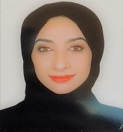
Biography:
Rahma Al Riyami has earned a Bachelor of Science in Chemical Engineering and a Master of Engineering in Environmental Engineering, both from University of Cincinnati, Ohio United States of America. She works as a Sustainable Development Executive. She is in charge of developing, implementing and monitoring company environmental strategies. She is also responsible for categorizing and tracing all environmental related issues arising from urban, industrial and commercial activities in the country, such as energy use, natural resource use, waste generation and recycling.
Abstract:
The waste management hierarchy, which emphasizes on minimal waste production with disposal as the least favored option, is the foundation of the integrated sustainability approach which covers three main aspects of waste management: (1) stakeholders, (2) sustainability aspects and (3) waste system elements. This approach aims to adopt practices which diverges an economy from a linear approach where resources are utilized overwhelmingly with minimal reutilization towards a circular economy. The circular economy necessitates a recuperative and regenerative system designed to close the loop of industrial production to ensure minimal waste disposal at landfills. be’ah embarked on a journey to close all traditional dumpsites that cause air, water, and soil pollution and replace them with high engineered landfills, where feasible. These cutting edge landfills which are compacted and lined are designed to prevent leachate from polluting the soil and underlining groundwater and accept municipal solid waste for final disposal in a secure and safe manner, minimizing the risk to people and the environment. be’ah also aims at expanding the base of “greener” service offerings, such as consulting with citizens on waste reduction, recycling, and planning to produce biogas from waste as a high-efficiency renewable fuel to replace fossil fuels that cause pollution. We set aside as buffer zones, we make a concentrated effort to promote the natural value of environment by providing habitat for wildlife through planting and cleaning, and offering environmental activities that promote sustainability. The Environmental Center of Excellence has been established to achieve a new momentum in driving a culture of sustainability within be’ah. We engage broadly, and at every level, with all the environmental entitled stakeholders to discuss the issues affecting the environment and the methods in which sustainability can be achieved at national and international levels.
Susilawati
Central Kalimantan of Asessment Institute for Agricultural Technology, Indonesia
Title: Forest fire prevention through agricultural innovation in the ex-mega rice project area in Central Kalimantan
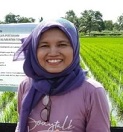
Biography:
Susilawati is an Agronomic Researcher who has conducted research in the field, especially for food crops in sub-optimal land, such as swamps land, peatland and dry land. She is active to the introduction of superior rice varieties of environmental friendly to local communities. Management and utilization of plant genetic resources, prevention of land fires through cultivation activities, both nationally and internationally. Some of her innovations that have been produced include “Jajar Legowo Super” that specific on tidal swamp land, technology pf ratoon in rice cultivation on tidal land. She was the best researcher for local-specific research fields in 2017.
Abstract:
In 1995, the Government of Indonesia initiated the Central Kalimantan Peatland Development Project – commonly known as the Mega Rice Project - to convert up to one million hectares of peat and lowland swamp to rice cultivation. In order to prepare the land for cultivation the peatland was drained through the construction of thousands of kilometers of canals and forest was cut. The effects were very damaging for the environment as the soils dried and the forests degraded. Agricultural developments were largely unsuccessful in the difficult peat land conditions. Agriculture is traditionally being practiced on the mineral soils along the river. A diversity of food crops, estate crops and livestock is grown and reared in the area. The limited suitability of the peat lands for agriculture often has to do with the acidity of the soils. Much land is only suitable for a limited number of crops. This leads to low agricultural production resulting in poverty among local communities. Fire has traditionally been used for land clearing and is still a common tool for agricultural preparations and land clearing for other purposes. Farmers traditionally monitor fires as they burn to avoid spreading. However, when peat soils are dry and forests are degraded they easily catch on fire. This paper aims to reduce the incidence of forest fires through the introduction of innovative techniques that limit the use of fire in land clearing. These techniques taken from the climate smart agriculture approach will be able to support the local communities to diversify their farming methods and make use of the environmental circumstances in which they live to increase their agricultural production and improve their livelihoods. The result show that land clearing with limited use of fire have positive effects on agricultural production and can reduce the incidence of forest fires.

Biography:
Veronica Goncalves has her expertise in communication and passion in the natural world and resources. Since 2012 she has been developing skills in personal development. In 2016 started to participate in conferences in the US, and made research in environment. With the new skills and professional experience that has been achieving while working in London would like to increase awareness about Climate Change and to be an example for other young generations.
Abstract:
London air pollution corresponds to a serious matter that drives to high levels of pollution and with health consequences for its citizens.Air pollution consist in the release of pollutants into the air. The air pollution has origin in the production and use of energy. The physical evidence of air pollution is determined by the presence of ground level ozone (smog) and particulate matter made of tiny particles of chemicals called soot. The air pollutants have two qualifications, the primary sources and secondary sources. The main primary pollutants is harmful in high concentrations, and are carbon compounds, such as Co, C02, CH4, VOCs, nitrogen compounds etc. The particulate matter are categorized in solid or liquid form and measured buy their diameter. While the secondary sources result from chemical reaction between the primary sources themselves or with in reaction with other componds and are called photochemical oxidants and secondary particulate matter. Air pollution is explained and described with conscious regarding the levels of pollutant gases that are present in the atmosphere. The origin of gases are referred for identification of the pollution sources and understanding the challenges and questions to minimize air pollution.
Jayati Das
Shri Shikshayatan College and Jadavpur University, India
Title: Air pollution a major factor in asthma predictability index among children living in and around Kolkata metropolis

Biography:
Jayati Das is currently a Postdoctoral Research Fellow at the Jadavpur University, Kolkata (India). She is also a teaching Faculty at Shri Shikshayatan College and Calcutta University. She holds the post of Secretary of Allergy and Asthma Research Centre, Kolkata a well-known NGO. She has completed 3 projects in health geography. She has 30 research papers published in renowned geographical journals in India and abroad. Besides research and teaching she is involved in social work mainly for the under privileged children in Kolkata.
Abstract:
Asthma is the most common pediatric chronic disease. Hindrance in asthma diagnosis is widespread resulting in unsatisfactory management in asthma. About 80% of pediatric asthma patients have symptom onset before age six, most of them before age three. However, only about 1/3 of children with at least one episode of asthmatic symptoms by age three will have asthma at age six and over. Asthma is under-diagnosed in 18-75 % of asthmatic children. Kolkata is categorized unhealthy for human beings. Deterioration in urban air quality in most megacities is quite profound and this city is no exception to this. An assessment of Kolkata air quality is done where the listed pollutants’ (RPM, SPM, NO2 and SO2) annual average concentration are classified into four different categories; namely critical, high, moderate and low pollution. There are 17 monitoring stations in Kolkata and out of which five fall under the critical category, and the remaining 12 locations fall under the high category of NO2 concentration; regarding RPM, four stations are critical and 13 stations record data which are under the high pollution category. Model questionnaires were run through 10% of the households to assess socio-economic conditions, critical environmental conditions, nature and types of health burdens as well as gauge the attitude in the direction of healthcare facilities were done. A comprehensive and up-to-date knowledge about the seasonal and spatial variation of asthma and studying air quality of the area was carried out. Mapping through GIS was done. It is desirable to construct an accurate model (Asthma Prediction Index) to predict whether a child will develop asthma in the future due to the deteriorating air pollution in the city.
Constantinos Sioutas
University of Southern California, USA
Title: Source apportionment of the redox activity of urban fine particulate matter in Athens, Greece
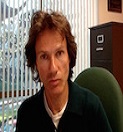
Biography:
Abstract:
Ahmed Talaat Tawfik
Dhafarah Region Municipality, UAE
Title: Separation and retention of some textile dyes in natural water employing polyurethane foams
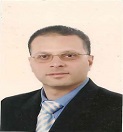
Biography:
Ahmed Talaat Tawfik has diverse experiences in environmental control and treatment. He has worked in Egyptian Environmental Affairs Agency since 2000 as environmental researcher and have several papers in environmental treatment. Ahmed Talaat Tawfik has established environmental system management for different organization to implement, monitor and control the environment in Egypt and UAE. Dr Ahmed Talaat Tawfik has received many appreciation awards from Egyptian minister and UAE ministers.
Abstract:
In recent years, the growth of the human population of the world causes not only serious problems of food and resources, but also brings the encroachment of the natural ecosystem. Thus, with a heightened sense and increased awareness of environmental responsibility comes a need for removal or minimizing the organic pollutants in industrial wastes. Industrial wastes in the form of solid, gas and liquid effluents represent one of the most serious problems of environmental pollution and necessitate strict control and appropriate treatment processes. The resilient open cell polyurethane foam represents an efficient separation and preconcentration medium for the investigated textile dyes in diluted aqueous solutions. The kinetics, mechanisms and thermodynamics characteristics of the sorption steps of the dyes onto polyurethane foam are also considered. The proposed methods permit rapid and effective separation of sandolane dye from water samples at relatively high flow rate without loss in column performance. Overall, the results of this study provide a deeper insight into the mechanism of extraction of some textile dyes by polyurethane membrane and show that the PUFs membrane has a considerable potential in commercial applications for removal of some textile dyes from industrial effluents. The applicability of the proposed foam column method for quantitative collection and recovery of sandolane from natural and underground water as a case study was critically investigated. A one liter of tap or underground water sample spiked with sandolane at 1-5 µg/cm3 concentration level was percolated through the foam column at 10 cm3/min flow rate. More or less complete extraction of the tested dye was achieved quantitatively as indicated from the effluent solutions. The retained species were also successfully recovered with 50 cm3 acetone at 5 cm3/min flow rate. The breakthrough curves of sandolane spiked to tap and underground water samples are presented in Fig.1. The results revealed excellent extraction 98% and recovery percentages even if samples contain high content of dissolved solids.
